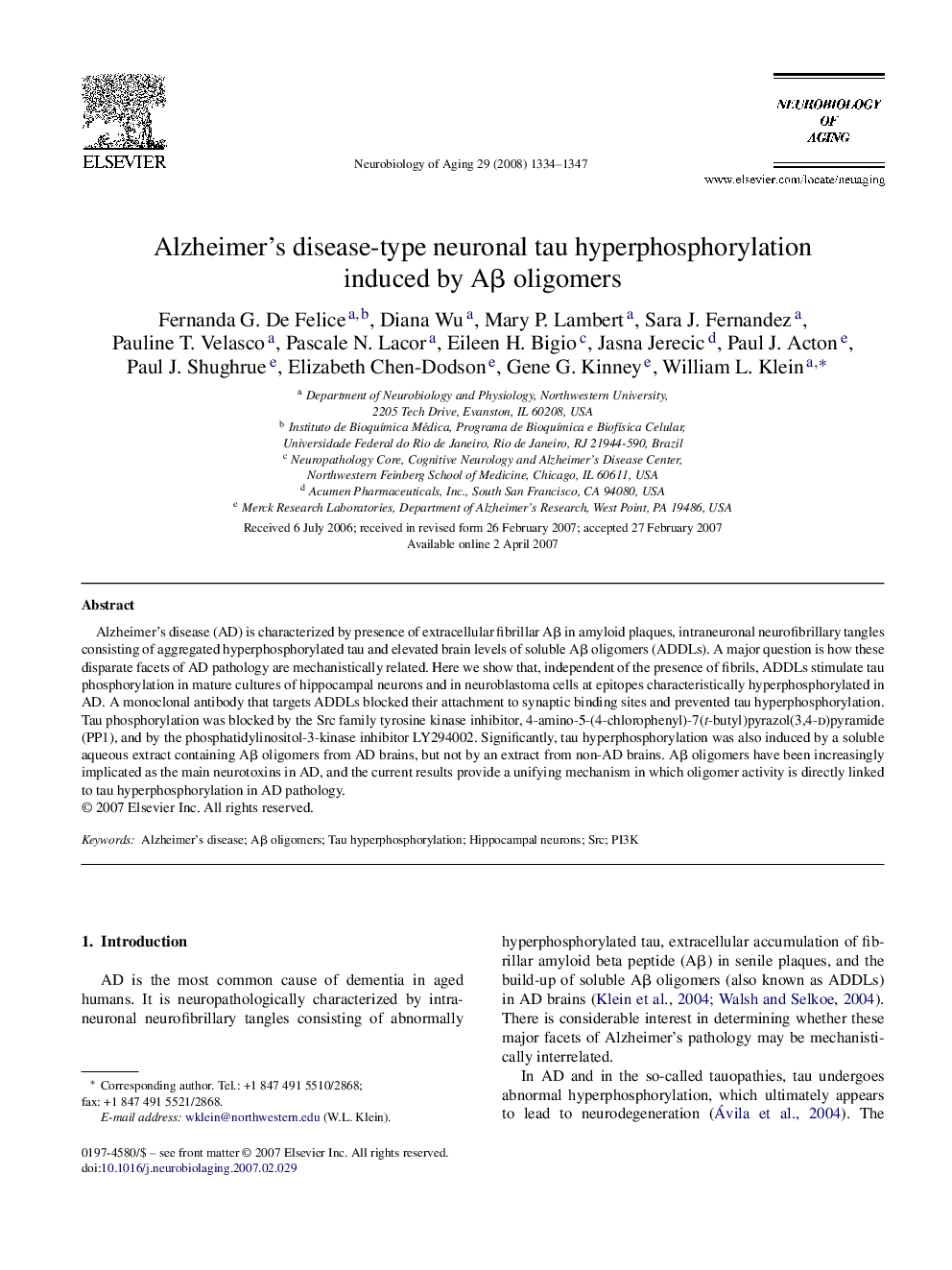| Article ID | Journal | Published Year | Pages | File Type |
|---|---|---|---|---|
| 6810886 | Neurobiology of Aging | 2008 | 14 Pages |
Abstract
Alzheimer's disease (AD) is characterized by presence of extracellular fibrillar Aβ in amyloid plaques, intraneuronal neurofibrillary tangles consisting of aggregated hyperphosphorylated tau and elevated brain levels of soluble Aβ oligomers (ADDLs). A major question is how these disparate facets of AD pathology are mechanistically related. Here we show that, independent of the presence of fibrils, ADDLs stimulate tau phosphorylation in mature cultures of hippocampal neurons and in neuroblastoma cells at epitopes characteristically hyperphosphorylated in AD. A monoclonal antibody that targets ADDLs blocked their attachment to synaptic binding sites and prevented tau hyperphosphorylation. Tau phosphorylation was blocked by the Src family tyrosine kinase inhibitor, 4-amino-5-(4-chlorophenyl)-7(t-butyl)pyrazol(3,4-d)pyramide (PP1), and by the phosphatidylinositol-3-kinase inhibitor LY294002. Significantly, tau hyperphosphorylation was also induced by a soluble aqueous extract containing Aβ oligomers from AD brains, but not by an extract from non-AD brains. Aβ oligomers have been increasingly implicated as the main neurotoxins in AD, and the current results provide a unifying mechanism in which oligomer activity is directly linked to tau hyperphosphorylation in AD pathology.
Related Topics
Life Sciences
Biochemistry, Genetics and Molecular Biology
Ageing
Authors
Fernanda G. De Felice, Diana Wu, Mary P. Lambert, Sara J. Fernandez, Pauline T. Velasco, Pascale N. Lacor, Eileen H. Bigio, Jasna Jerecic, Paul J. Acton, Paul J. Shughrue, Elizabeth Chen-Dodson, Gene G. Kinney, William L. Klein,
